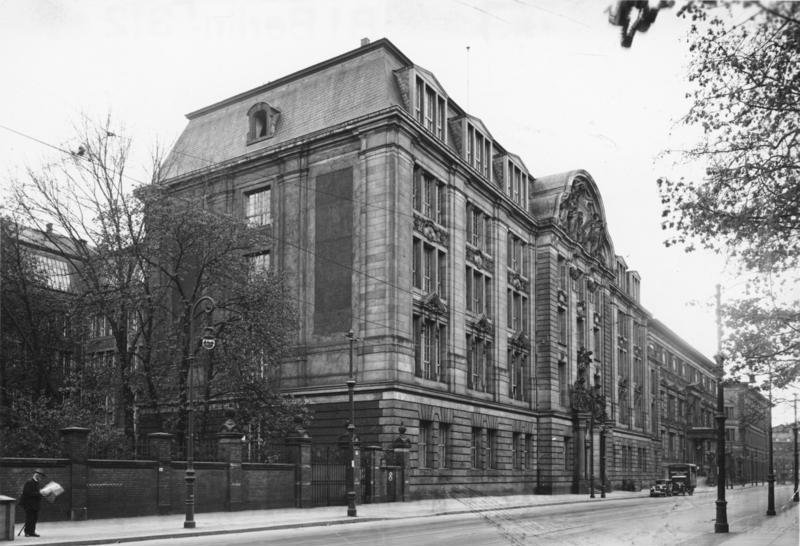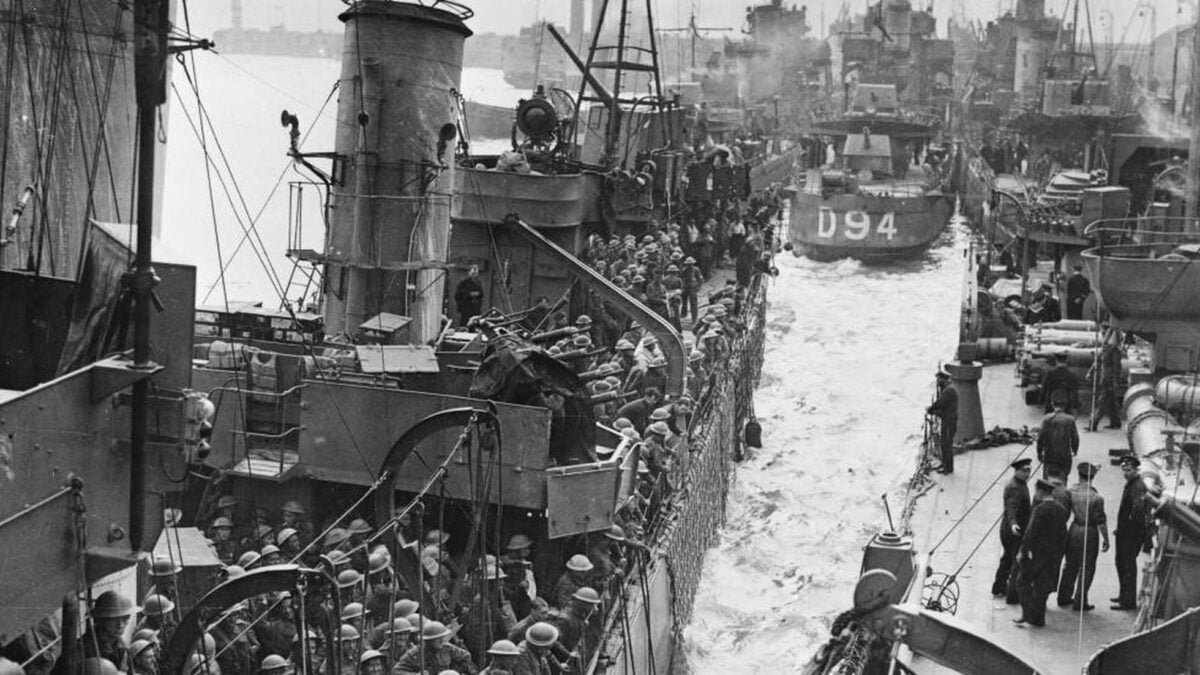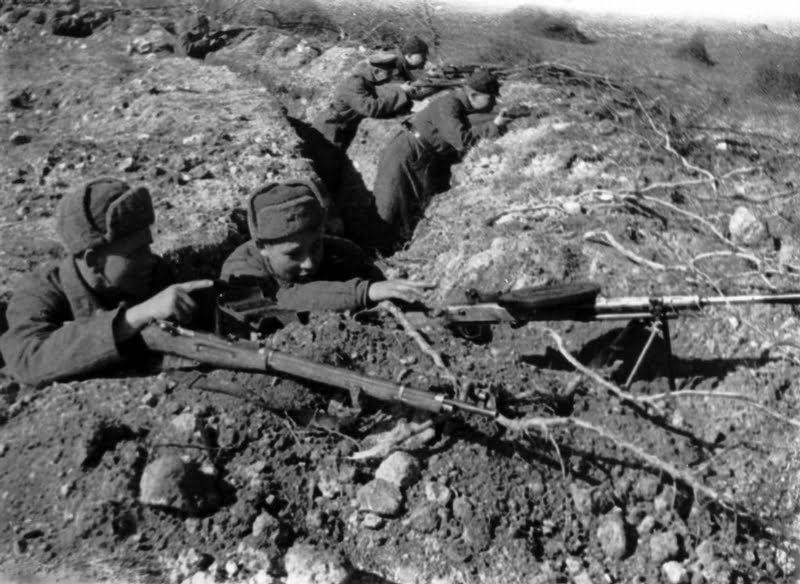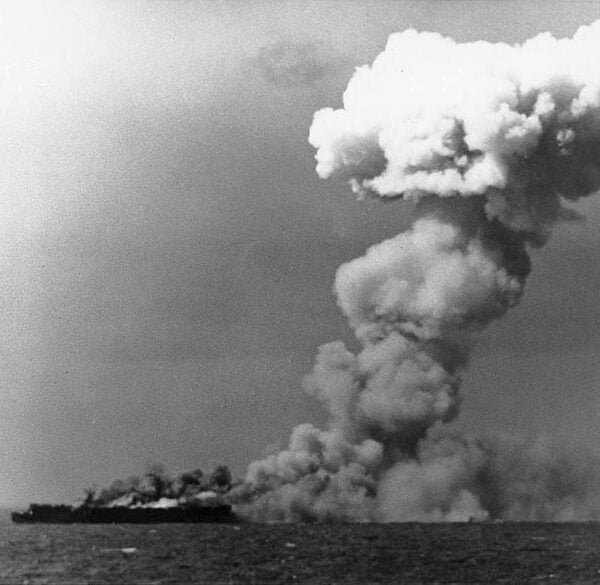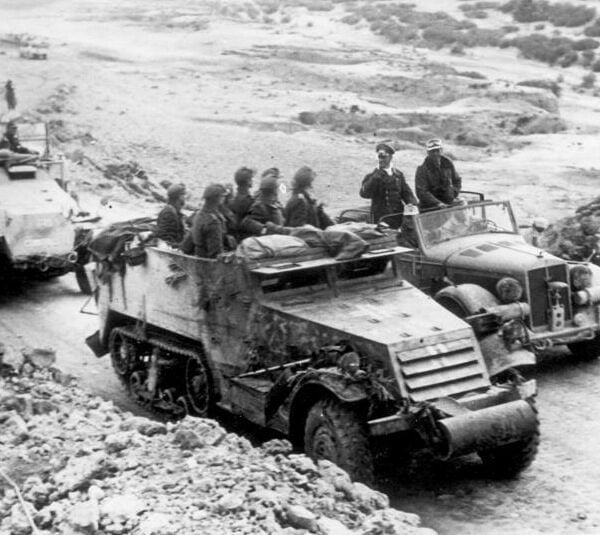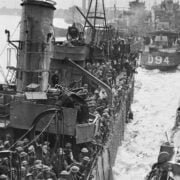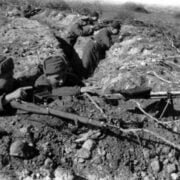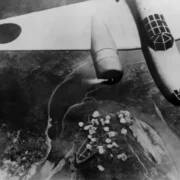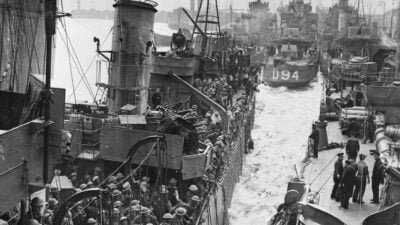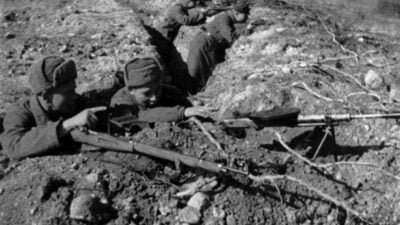The Battle of Peleliu, fought between September 15 and November 27, 1944, during World War II, was one of the most ferocious and bloodiest conflicts in the Pacific. This small island located in the Palau Islands became a battleground where the forces of the United States and Japan clashed in a brutal struggle for its control.
Also check out: The Afrika Korps of Rommel: The Campaign in North Africa
The Pacific Theater and Allied Strategy
The Battle of Peleliu occurred within the broader context of the Pacific Theater during World War II, an area of military operations that encompassed vast expanses of the Pacific Ocean and the islands scattered throughout. This theater of operations played a crucial role in the overall strategy of the Allies and was marked by brutal battles and confrontations challenging both military forces and war strategies.


Japanese Expansion
In the early 1930s, Japan embarked on an expansionist campaign in Asia, invading Manchuria in 1931 and further expanding its dominance in areas such as China and the Korean Peninsula. These actions raised concerns among Western nations, leading to economic embargoes and sanctions against Japan.
The Japanese invasion of China, which began in 1937, further deepened tensions. The Japanese occupation of Chinese territories and the associated brutality further fueled international concerns.
Attack on Pearl Harbor
On December 7, 1941, Japan launched a surprise attack on the United States’ naval base at Pearl Harbor in Hawaii. This shocking attack resulted in the United States’ entry into World War II and marked the beginning of a fierce conflict in the Pacific.
Japanese expansion and the attack on Pearl Harbor led the Allies to consider the importance of containing Japanese forces and reclaiming the areas that had been occupied. This triggered a series of campaigns and battles in the Pacific Theater.
The “Island-Hopping” Strategy
The Allied strategy in the Pacific was known as “island-hopping,” involving the capture of strategically located islands that could be used as bases to support future operations. The captured islands would serve as footholds for the advancement towards Japan, as the Allied forces aimed to recapture territories occupied by the enemy.
This strategy led to a series of brutal battles as U.S. and other Allied forces faced Japanese defenses on the Pacific islands. Each island was a heavily fortified stronghold, and the battles often resulted in a high cost in terms of human lives.
Peleliu in the Allied Strategy
Peleliu, a small island in the Palau Islands, was chosen as part of this “island-hopping” strategy. Its strategic location and the presence of an airstrip made the island a priority target for capture by the United States. The strategy was to use Peleliu as a base to support future operations in the Philippines and eventually Japan.
However, what the Allies did not anticipate was the fierce and tenacious resistance they would encounter on Peleliu. The island was heavily fortified, and the Japanese defenses proved extremely difficult to overcome. The Battle of Peleliu turned into one of the war’s bloodiest battles, underlining the price of the “island-hopping” strategy in the Pacific Theater.
The Battle for the Fortified Island
The assault on Peleliu, during the Battle of Peleliu, was one of the most critical and intense moments of the conflict in the Pacific Theater during World War II. The fight to capture the island, which had been turned into a fortress by Japanese forces, was marked by fierce house-to-house combat and a high human cost.
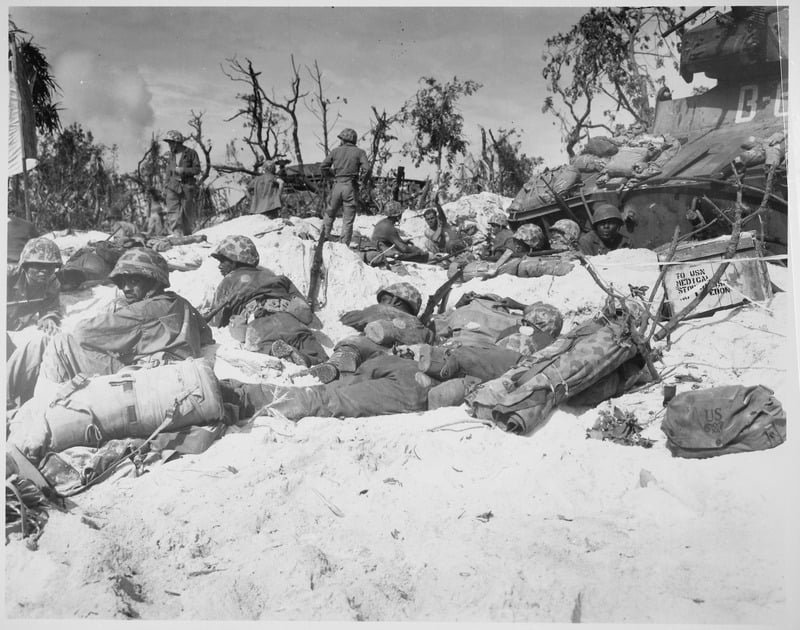

Invasion Planning
The invasion planning was carried out under the leadership of General William Rupertus, commander of the 1st Marine Division of the United States. The strategy was to establish a beachhead on the island’s western shore, where the airstrip was located, and from there, advance to capture the rest of the island.
The invasion was scheduled for September 15, 1944, and involved a substantial task force, including the 1st Marine Division, U.S. Army units, and naval and aerial support.
Fierce Japanese Resistance
As the initial waves of Marines landed on Peleliu’s western beach, they encountered fierce Japanese resistance. The Japanese forces had fortified the island with an intricate network of bunkers, trenches, and tunnels. The Marines faced intense artillery, machine gun fire, and mortar attacks as soon as they reached the shore.
The initial advance was slow and brutal, with the U.S. forces facing difficulties in moving forward due to Japanese resistance. The battle quickly turned into close combat, as the Marines had to clear out Japanese bunkers and tunnels.
Adverse Conditions
Besides the Japanese resistance, the Marines had to deal with adverse conditions on the island. The hot and humid tropical climate of Peleliu, coupled with the lack of fresh water supply, resulted in dehydration and exhaustion among the fighters. The island was also filled with natural obstacles like sharp coral reefs and dense vegetation.
The combination of enemy resistance and harsh conditions made the battle particularly challenging. Prolonged combat and exposure to adverse conditions took a heavy toll on the Marines and the Allied forces.
High Human Cost of the Battle of Peleliu
The battle unfolded over several weeks and resulted in a terrible human cost. The casualties among the Marines and US forces were significant, with thousands dead and wounded. The persistent Japanese resistance and adverse conditions made the battle particularly bloody.
The fighting continued for months, but the island was finally captured by the United States in November 1944. The battle on the island left deep scars on the survivors, both physical and emotional.
Consequences of the Assault
The high cost of the battle led to a reassessment of tactics and combat strategies in the Pacific. The lessons learned in Peleliu influenced future operations in the Pacific Theater.
The capture of Peleliu, along with the conquest of other Pacific islands, advanced the Allies’ ‘island-hopping’ strategy, bringing them closer to advanced bases that would be used to advance towards Japan.
The Agonies of the Battle of Peleliu
The battle, fought between the forces of the United States and Japan in September and November of 1944, was one of the bloodiest and most costly battles of World War II. The struggle on the island of Peleliu turned into a nightmare for the involved troops due to the fierce Japanese resistance, adverse conditions, and treacherous terrain.


Relentless Japanese Resistance in the Battle of Peleliu
One of the main reasons that made the battle so bloody was the fierce and relentless resistance from the Japanese forces. They had turned the island into a fortress with an intricate network of underground bunkers, trenches, and artillery positions. This allowed them to hide and ambush American forces, making every advance a challenge.
Japanese tactics involved the use of ambushes and traps, along with a courageous and obstinate defense in their bunkers. This made the progress of the Marines and U.S. soldiers incredibly difficult.
hand-to-hand combat
As the United States forces advanced through the island, they were confronted with hand-to-hand combat in bunkers, tunnels, and trenches. This required exceptional courage and resulted in a high number of casualties on both sides.
Marines and American soldiers often had to throw grenades, use flamethrowers, and even explosives directly into the enemy bunkers to eliminate them. The proximity to the enemy made the fighting even more intense and personal.
Adverse Conditions of the Battle of Peleliu
Beyond the Japanese resistance, adverse conditions on the island worsened the suffering of the US troops. The hot and humid tropical climate led to dehydration and exhaustion among the combatants. The lack of potable water and fresh food made the situation even more difficult.
The uneven terrain, with sharp coral reefs and dense vegetation, made movements slow and dangerous. Many soldiers were injured due to falls and accidents caused by the rugged terrain.
High Human Cost
The fight on the island of Peleliu had a terrible human cost. It’s estimated that American losses reached about 10,000, including the dead, wounded, and missing. Japanese forces also suffered heavy losses, with most of the island’s defenders losing their lives.
The prolonged combat and the intensity of the battle left deep scars on the survivors, both physical and emotional. Many soldiers developed what is now known as “combat stress,” a psychological trauma resulting from their experiences in the battle.
Lessons Learned and Lasting Legacy
The Battle of Peleliu, one of the bloodiest and most costly battles of World War II, had significant consequences, both in terms of lessons learned and its long-term impact. Let’s delve into the aftermath of the battle, echoing not only across the Pacific Theater but also in military strategy and the legacy of courage among the United States Marines.
Tactical Reassessment after the Battle of Peleliu
The brutal fight led to a reassessment of combat tactics and strategies. Lessons learned on the island, especially regarding Japanese resistance and adverse conditions, influenced future operations in the Pacific Theater.
The U.S. forces adapted their tactics to combat Japanese bunkers and trenches, using new strategies and techniques, such as the more effective use of artillery and flamethrowers. These adaptations were crucial to overcoming Japanese fortifications on subsequent islands.
Refinement of the ‘Island-Hopping’ Approach
The ‘Island-Hopping’ strategy of the Allies in the Pacific was adjusted after Peleliu. Commanders realized that the fierce Japanese resistance and adverse conditions demanded a more careful and deliberate approach in target selection.
The lessons from Peleliu influenced the choice of subsequent target islands, taking into account factors such as the defensibility of the island, its strategic importance, and the likelihood of obstinate Japanese resistance.
The High Human Cost of the Battle of Peleliu
The high casualty rate served as a vivid reminder of the high cost of war. The loss of thousands of American soldiers in the battle underscored the need to seek solutions to minimize casualties in future operations.
The experience led to improvements in medical evacuations, combat medical training, and care for the wounded, aiming to increase soldiers’ chances of survival.
Legacy of Courage and Sacrifice
The Battle of Peleliu left a lasting legacy of courage and sacrifice. The Marines who fought on the island showed extraordinary determination in the face of adverse conditions and fierce enemy resistance. Their heroism and sacrifice continue to be remembered and honored by future generations.
Small Marine units, such as ‘Colonel Puller’s Combat Group,’ stood out in Peleliu, bravely defending critical positions despite the adversities.
The impact of the Battle of Peleliu on the Pacific Theater
Beyond its tactical lessons, Peleliu had a significant impact on the Pacific Theater. The island’s capture provided an advanced base for subsequent operations, such as the invasion of the Philippines.
The victory and the lessons learned contributed to the ongoing advancement of U.S. forces in the Pacific, edging closer to Japan and the end of the war.
In summary, the battle had profound consequences in terms of military strategy, lessons learned, and a legacy of courage. Despite being one of the bloodiest battles of World War II, Peleliu played a critical role in the Pacific campaign, bolstering the resilience of U.S. forces and shaping their approach to future operations in the Pacific Theater.
